Stacking Worm Bin Manual
Worm farming
Worms can do wonders for the garden: they aerate the soil and their castings are an excellent fertilizer. To get a constant supply of this worm fertilizer as well as extra worms for the garden, start a worm farm.
Use Red Worms or Tiger Worms only. The common garden/earth worm is not suitable.
Setting up the system
Worm farms are simple structures. They consist of several stackable trays made of wood. The worms live in the trays and simply wriggle their way up from the lowest tray into the one above, where they can smell fresh food: fruit, vegetable and other scraps that might otherwise go to waste. These scraps are turned into the castings that make such good fertilizer.
The drip tray is a plastic paint tray, used to catch liquid run-off that percolates down from the upper trays. The upper trays’ floor is made of plastic mesh to let the worms move up through the floor to reach fresh food supplies. These 'holey' trays lock into each other and are deep enough to leave enough room for the worms to move about without being squashed. The plastic mesh is strong enough to hold compost weight and at the same time it bends down to remain in contact with compost in a lower tray.
To create congenial living conditions for the worms, you need bedding and soil to start the farm and a continuing supply of suitable food scraps.
Starting the farm
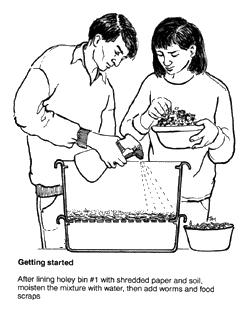
- Soak 2lb of dry bedding (the standard package form Wood Worm Farms) in 1 litre (4.5 cups) of non- chlorinated water. It's better to use rain or pond water.
- Let the bedding to absorb water for minimum 2 - 3 hours, better several days.
- Put one holey tray on the base. You don't need other trays now.
- Put the drip tray on the floor beneath the bin - to prevent water from dripping on the floor.
- Put the wet bedding in the holey tray.
- Put worms on top of the bedding
- Cover with the lid.
Allow the farm to settle in for a couple of weeks before lifting the cover and putting in more food scraps. Bury food scraps in different spots of the tray covering them with ready compost (usually rejected material from worm castings screening), add some more bedding if necessary. Check on the tray's progress and add more food scraps as the worms grow and multiply. Make sure that your worms have enough food, but don't overfeed them - uneaten food will simply rot, resulting in a smelly farm and unhappy worms.
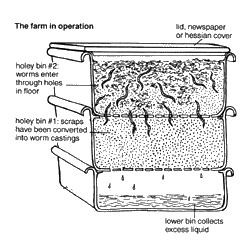
When holey tray #1 is full of worms and worm castings, remove the cover and place holey tray #2 on top. Put food scraps, new bedding and some old compost in tray #2 and, again, exclude light and keep the contents moist. In about 2-3 weeks the worms from tray #1 will have moved up into the fresh food in tray #2. If you have more trays, repeat the same operation with each one in its time. If it's your last tray, empy castings from the lowest tray into a ready compost container and use an empty tray on the top – end of cycle. Castings can be spread on the garden or used for pot plants.
Hints for happy worms
Light
Worms usually live underground so they thrive in an environment that is cool, dark and moist.
Moisture
Worms like moisture and should not be allowed to dry out. It's better to keep moisture on its higher lever. A light spray of fresh water is required sometimes during the farm operation. If the bin consistently remains too dry you can put a perforated piece of plastic bag between the bottom stand and the lowest tray to reduce airflow ant thus evaporation. If a content of a bin becomes too moist you can add some dry bedding to balance the moisture.
Food
Worms are voracious eaters. Once the worms are settled in and growing, give them a good supply of suitable food.
Worms like most vegetable and fruit scraps, but as worms do not have teeth, scraps should be cut into relatively small pieces. Even larger pieces, though, will eventually rot and decompose, but this could take more time. Worms need a small amount of sand (mixed with garden soil) added to the food for their digestion system. 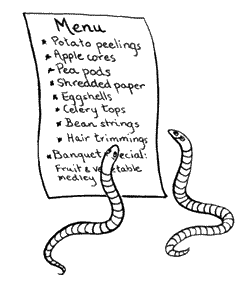
Worms also like:
- soaked and ripped pizza boxes
- shredded and soaked cardboard
- paper
- fruit and vegetable (except onions and citrus)
- leaves
- dirt
- hair
- egg shells.
Worms can't eat live vegetation (otherwise we wouldn't have any plants left on Eart), so some live vegetable scrap, like potato peels, cabbage hears, carrot 'tails', etc. has to be heated in a microwave and then cooled; or, alternatively, frozen in a freezer and then defrosted, before it gets to the bin.
It's a good idea to store the food scraps in a plastic container for a week before giving them to worms. The worms like this "pre-fermented" food.
Worms will eat meat but it can lead to smells and maggots in the worm farm.
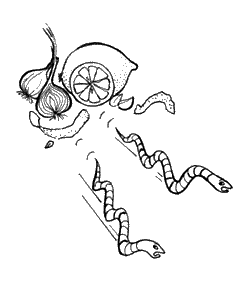
Plants from the onion family (including garlic and shallots) and citrus fruits contain volatile oils. Small amounts of these products are OK, but if too much of these are included in the food scraps the worms will climb out of their bin to get away from the smell.
If this happens to your worm farm, place another tray full of wet bedding with a fresh food supply on top of the contaminated tray. Once the worms have climbed out of the contaminated tray (about a week) remove it and use the castings for normal hot compost - the uneaten onion and citrus won't hurt the garden.
Worm farm 'produce'
Castings can go straight onto the garden or pot plants. If they are covered with mulch their moisture and nutrient content will be conserved.
An excellent liquid fertilizer can be made from the castings by adding water until the mixture looks like weak tea. African violets and other plants that like being fed from the roots, just love this mixture.
Moisture drained from the worm farm's bottom crate is also a good liquid fertilizer, but it too should be diluted.
Excess worms can be put in the compost heap where they will help speed up the composting process.
December 2010

 Categories
Categories Information
Information Our Partners
Our Partners 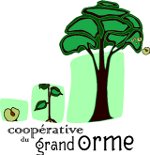

 Shopping Cart
Shopping Cart Featured
Featured


 Shipping Estimate
Shipping Estimate  Specials
Specials Bestsellers
Bestsellers


